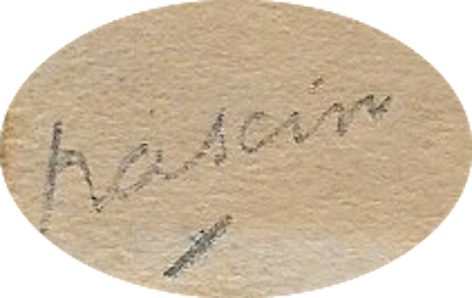

(Vidine-Bulgaria, 1885 - Paris, 1930)

Julius Mordecai Pincas (1885-1930), known as Jules Pascin or the 'Prince of Montparnasse', was born in the Bulgarian city of Vidin, son of prosperous grain merchants, he decided not to walk in the footsteps of his parents and prefers to spend time in a local brothel, drawing young girls waiting for new clients, then studying painting in Munich, a city of radiant artistic activity, and then manages to live off the sale of his drawings to Simplicissimus, a satirical magazine published in Munich.
In 1905, 20 years old, Julius Pincas leaves for Paris and adopts the nickname Pascin, an anagram of Pincas. His satirical and sagacious drawings are then known all over Europe and he quickly becomes an important player in the international art scene in Paris.
In 1907, he meets Hermine David, a painter too. He will marry her ten years later. He occupies a workshop in Montmartre, frequents Foujita, Kisling, Soutine, imposes himself among the painters of L'Ecole de Paris, occupying a place apart.
When the First World War broke out, Pascin moved to the United States to avoid serving in the Bulgarian army. He acquired notoriety, at the same time as the American nationality, traveled a lot, draws especially and shocked by the eroticism of his works. It will bring back drawings, watercolors of Cuba, Havana, Lisbon, London, Tunis. He likes Watteau, Fragonard, sensuality, classic beauty, admits the influence of Klimt, his elder, Egon Schiele, his exact contemporary.
He returned to Paris shortly after the end of the war and became the symbol of the artistic community of Montparnasse. It organizes legendary nocturnal parties as well as picnics along the Marne. Despite his intense social activity, Pascin faces serious problems with alcoholism and depression. He commits suicide at the age of 45, after the opening of one of his exhibitions.
Jules Pascin finds inspiration in his bohemian life in Paris. His friends are frequently the subject of his work. He gets unanimous recognition for his elegant and erotic drawings and watercolors of nude and sensual women. A simple and decisive line forms the main feature of his style, as if the drawings were simple sketches sketched quickly.